DNA microsatellites allow many families to be reared together, for individual sorting later on
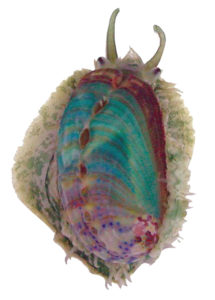
The tropical abalone (Haliotis asinina) is the overlooked sibling of the temperate abalone that form a lucrative industry. Despite the fast growth of H. asinina, commercial farming of the species has been slow to progress. However, research in Australia may be about to transform this species into a more palatable proposition for farmers.
H. asinina has innate features that are highly desirable for aquaculture. Naturally synchronous spawning every two weeks in wild-caught broodstock supports many simultaneous cross-fertilizations. The fastest growth rate of all abalone allows H. asinina to reach sexual maturity within one year. This means gains can be made at least twice as rapidly as in the more slow-growing temperate species.
Tracing families with microsatellites
According to quantitative genetics textbooks, variation in animal size is due to a combination of genetic predisposition between families and environmental influences. If families can be created at the same time and reared together, the environmental component is reduced, making the genetics easier to evaluate.
The problem commonly faced is that microscopic larvae cannot be physically tagged, so they cannot be pooled until they are older. DNA microsatellites, however, can be used to trace family pedigrees and are very useful tools in this type of research. They allow many families to be reared together, knowing that individuals can be sorted into families at any time. Microsatellites also allow tracking of the genetic diversity in domesticated populations, which can help anticipate and prevent inbreeding.
Inheritance significant in size determination
Research by the authors has shown that H. asinina has a lot of genetic variation, which can be exploited to achieve increases in growth rates when domesticated. The authors recently started work at the University of Queensland and Bribie Island Aquaculture Research Centre to evaluate how much variation in growth is passed on through generations of Haliotis asinina.
Eighty-four separate batches of eggs were fertilized simultaneously and mixed together to form a cocktail of larvae with various genotypes. The abalone were grown for a year, then measured and photographed before being snap frozen.
DNA samples were taken to identify family origins using microsatellites, then the families were compared against each other. As it turned out, the parents of the abalone had a significant impact on their size, indicating that inheritance played a significant role in size determination, and selective breeding could hence be successful.
Importantly, though, not all big abalone were from the same families. This meant within-family variation could be used to achieve gains in selective breeding while maintaining a high proportion of the original genetic diversity, hence avoiding inbreeding.
Next phase: understanding growth
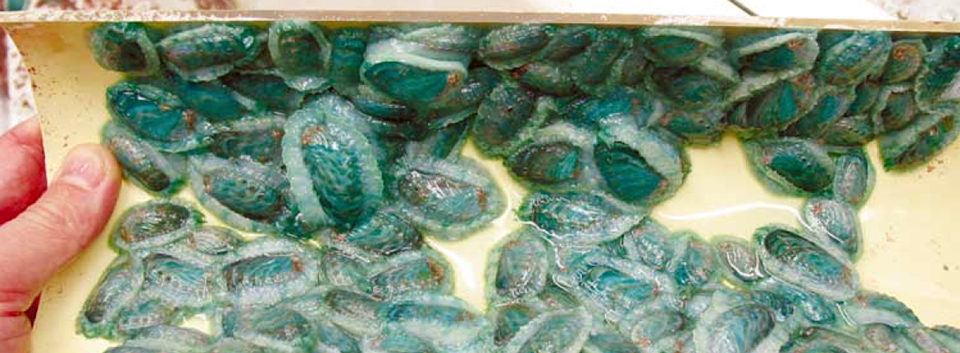
After realizing that tropical abalone would make a useful subject for a full-scale selective-breeding project, the authors want to know why the abalones in the fastest-growing families are doing so well. To answer this question, a closer look at the molecular processes at work is required.
DNA microarrays allow comparisons of the activity of thousands of genes between animals of interest in one simple experiment. Each growth-related gene has at least one specific purpose in a complex feedback system that starts with a few key “administrative” genes and flows through to genes involved in “labor” such as metabolic processes. The molecular machinery can be literally frozen in time by immersing whole abalone in liquid nitrogen and storing them at minus-80 degrees-C.
Basic analysis of microarray data can reveal consistent differences in productivity in some of the genes between fast- and slow-growing animals, indicating that those genes are somehow involved in the growth process. If the genes’ genetic codes are determined and compared to a database, it is likely some will match or almost match known genes in other animals.
In this way, researchers can guess what the genes’ functions might be to weed out the laborers and focus on the administrators. More thorough analysis might lead to a greater understanding of how the genes and cells work in concert to produce the cellular symphony of growth.
By learning more about the key genes involved in growth, it should be possible to identify fast-growing animals from wild-caught populations by looking for good “administrators” among their genetic make-up. This could be handy when choosing broodstock at the beginning of a selective-breeding program, reducing the considerable cost required to achieve gains in domesticated lines.
Another possible use for this knowledge is gene insertion. If extra copies of genes naturally found in a species, as opposed to genes from other animals, can be artificially introduced, controversy over genetically modified organisms might be reduced.
(Editor’s Note: This article was originally published in the August 2005 print edition of the Global Aquaculture Advocate.)
Now that you've reached the end of the article ...
… please consider supporting GSA’s mission to advance responsible seafood practices through education, advocacy and third-party assurances. The Advocate aims to document the evolution of responsible seafood practices and share the expansive knowledge of our vast network of contributors.
By becoming a Global Seafood Alliance member, you’re ensuring that all of the pre-competitive work we do through member benefits, resources and events can continue. Individual membership costs just $50 a year.
Not a GSA member? Join us.
Authors
-
Tim Lucas
School of Integrative Biology
University of Queensland
Goddard Building (8)
St. Lucia Campus
Brisbane, Queensland, Australia 4072[117,97,46,117,100,101,46,113,117,46,110,101,122,64,115,97,99,117,108,116]
-
Prof. Bernard Degnan
School of Integrative Biology
University of Queensland
Goddard Building (8)
St. Lucia Campus
Brisbane, Queensland, Australia 4072 -
Michael McBeth
Department of Primary Industries
Animal Research Institute
Brisbane, Queensland, Australia -
Wayne Knibb, Ph.D.
Department of Primary Industries
Bribie Island Aquaculture Research Centre
Woorim, Queensland, Australia
Tagged With
Related Posts
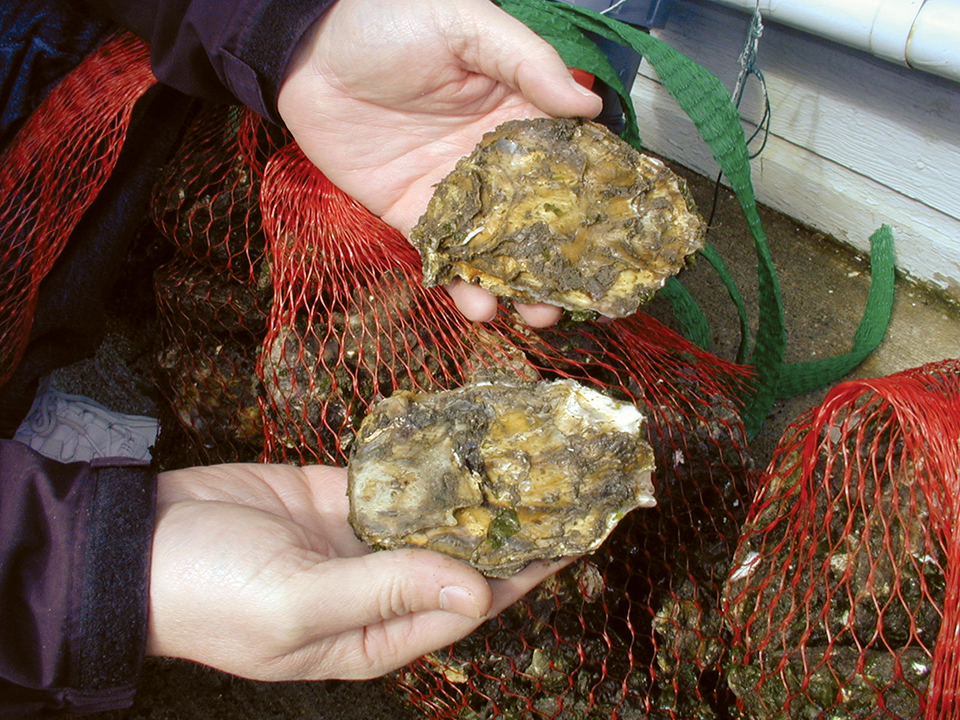
Intelligence
Proper processing destroys V. parahaemolyticus in seafood
V. parahaemolyticus presents a food safety hazard for those who consume raw shellfish. The organism can grow post-harvest in some shellfish species, especially oysters.
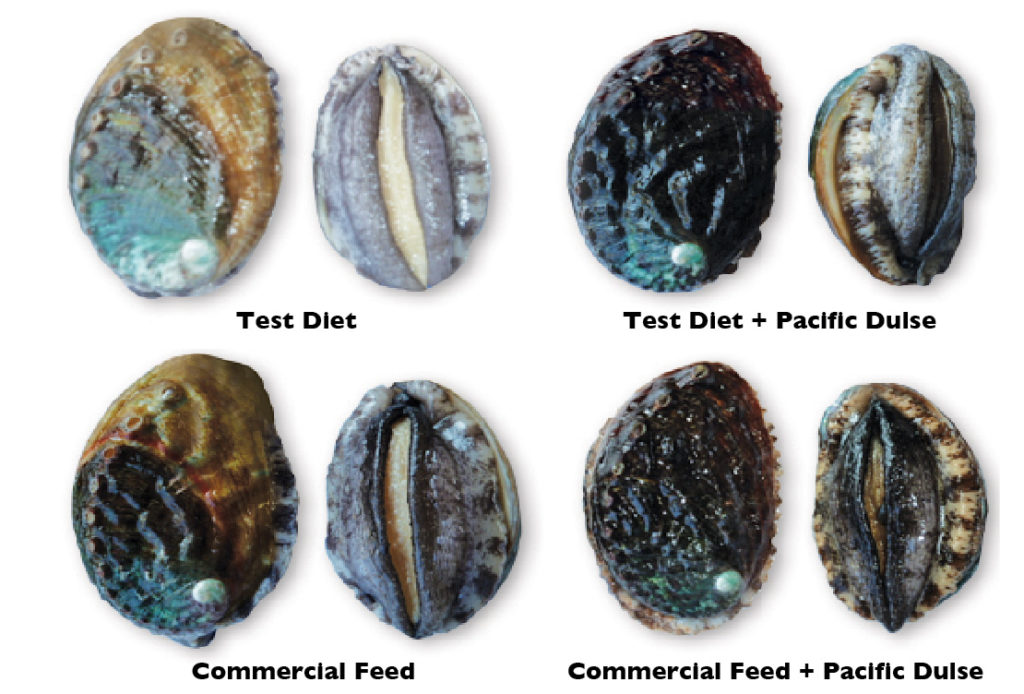
Health & Welfare
Diets affect abalone meat quality, shell color
A preliminary study investigated the effects of diet on the meat quality and shell color of Pacific abalone. A test diet and a commercial abalone feed resulted in lower meat protein content compared to that achieved with a diet of Pacific dulse seaweed. The artificial diets also caused the abalone to have yellow or orange shells. The seaweed diet alone resulted in abalone with dark-brown shells. However, a combination of seaweed and either artificial diet improved abalone growth, meat quality and shell color.
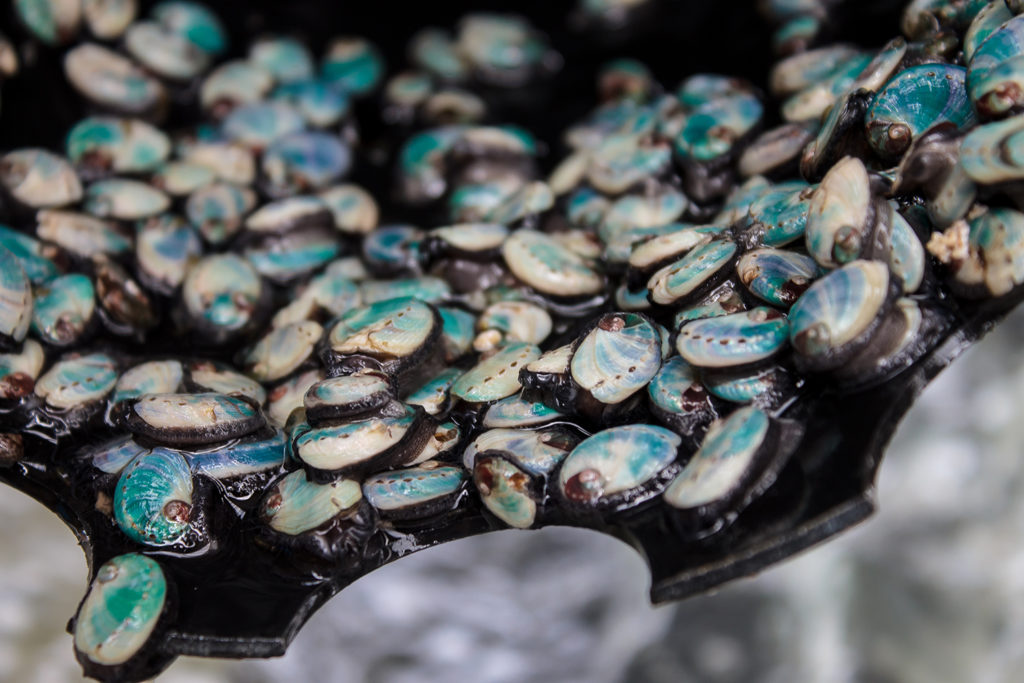
Responsibility
In South Africa, abalone farming goes for gold
Poaching has plagued South Africa’s abalone to the point of decimation. Aquaculture is putting the shellfish back in the water, and back on menus.
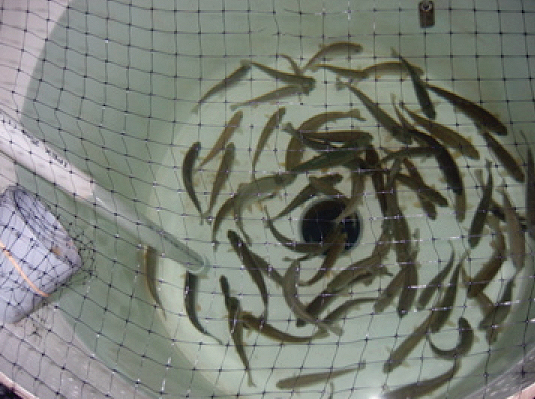
Health & Welfare
Algae shows promise as alternative DHA source in rainbow trout diets
A growth trial in Canada evaluated the use of algae biomass to increase the concentration of long-chain polyunsaturated fatty acids in the tissues of rainbow trout.


